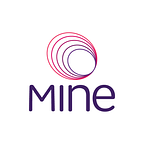Digital Tokenisation Series Part 3
What is a Legal Security and what is not?
Due to the novelty, significance and potential of digital tokens as well as the difficulty in defining them discussed here, they have created significant challenges for regulators and legal systems. The broad considerations for regulators are
- To allow the space to develop on its own merits so growth is not stifled.
- To define the tokens properly in a legal framework and understand the implications of that definition.
- To control illegal behaviours that would harm this new technological sector in its infancy.
This tri-lemma has been a source of consternation for blockchain firms looking to the future to build their businesses. Some firms have been damaged in the short-term by placing rigorous compliance and regulatory restrictions on themselves earlier than regulators have demanded. Some firms have treated the lack of clear and definitive rulings as carte blanche for dubious behaviour, raising money for any project and dealing in securities or exhibiting market behaviours that are clearly illegal in regulated jurisdictions.
The bottom line is that whether tokens are securities or not has huge implications for the tokens project, from the way they raise money, to legal status, listing on exchanges and reporting and regulation requirements. The industry has developed legal expertise within itself, borrowed from traditional finance to search regulatory tea-leaves for help defining their individual token offerings. The spectre of an unknown and unquantifiable risk, especially as a potentially fatal fine has overhung many viable projects and has limited investors from exposure to some investments, especially in the United States.
The key concern in the United States is whether or not a token is a security. In traditional financial markets a security is a tradeable financial asset, the most accessible example being a publicly traded share. A security has a financial mechanism through which value is derived. In the case of company equity, the company is the mechanism. In the case of debt, it is the payment of interest to the holder of the security. However ownership in a good, such as a commodity is not usually a security.
It is obvious that Bitcoin operates with a mechanism, however the SEC has been relatively clear that it does not view Bitcoin as a security. Other digital tokens can be equivalent to owning a resource or commodity for completely non-financial reasons, and the use and intention of the user begins to enter the calculations of regulators.
In the US, some tokens have pre-registered themselves as ‘Security Token Offerings’ (STO’s). Recognising the securitisation potential of a token opens the full potential of their use as alluded to earlier. Securitising physical assets as well as financial instruments and even using the token to trade them on exchanges is possible. There are issues in STO’s of compliance and access in the United States. STO’s carry significantly more compliance work than non-security Initial Coin Offerings and also only qualified investors are able to participate in STO’s².
For the Australian regulator ASIC, the regulation applicable to a token depend on whether the digital token is a financial product, financial products being defined as ‘a facility through which, or through the acquisition of which, a person does one or more of the following: (a) makes a financial investment, (b) manages financial risk, and © makes non-cash payments.‘ People familiar with tokens will see the problem facing ASIC, where the same transaction with the same parties can have different intentions and either be a financial product or not.
We have also received more clarification on the attitudes of regulators recently. A US offering, Block.one raised several billion dollars worth of digital assets but had never registered it as a securities offering as stipulated by US federal securities law. They came to an agreement with the SEC where they were fined $24 million but did not have to admit or deny the findings, signalling to the industry that they may not be severely punished for bold decisions to press forward before regulatory clarity is found.
The feeling on the street had been that regulators were coming for digital assets in a big way only months ago. Today it has evolved into a more nuanced approach from law enforcers to achieve a better result out of the trilemma, with support for the new industry being prioritised in a deteriorating global economy. Also, a number of jurisdictions are seeking to position themselves as ‘centres of competence’ for the digital industry, providing favourable environments for entrepreneurship, innovation and development of new financial instruments.
Mine Digital, 2019 ©
www.minedigital.exchange
https://minedigital.exchange/digital-tokenisation-legal-securities/
